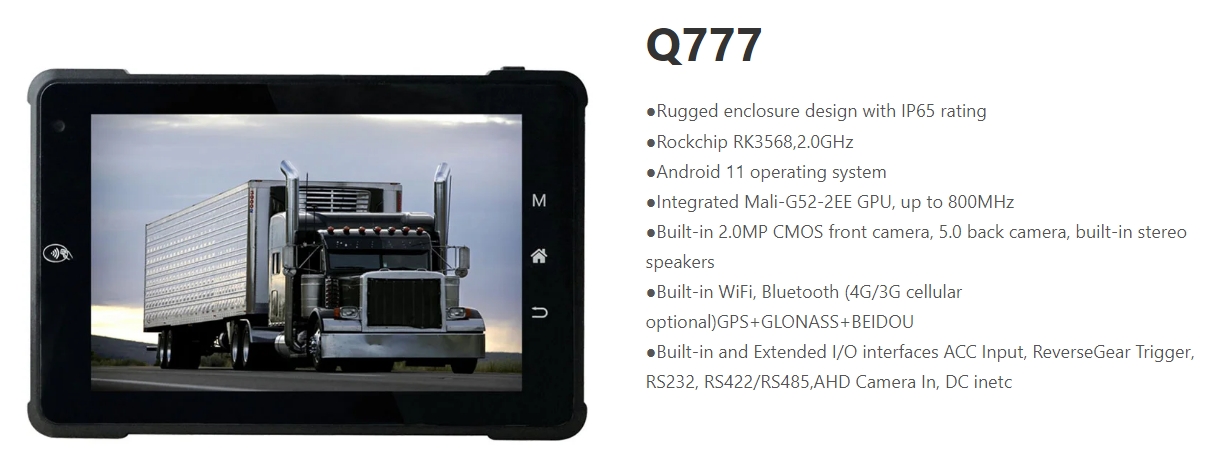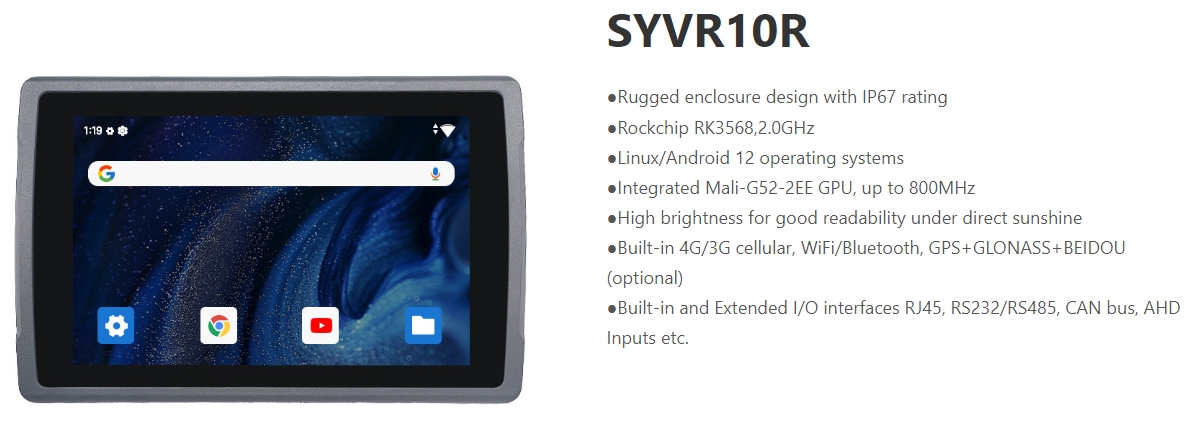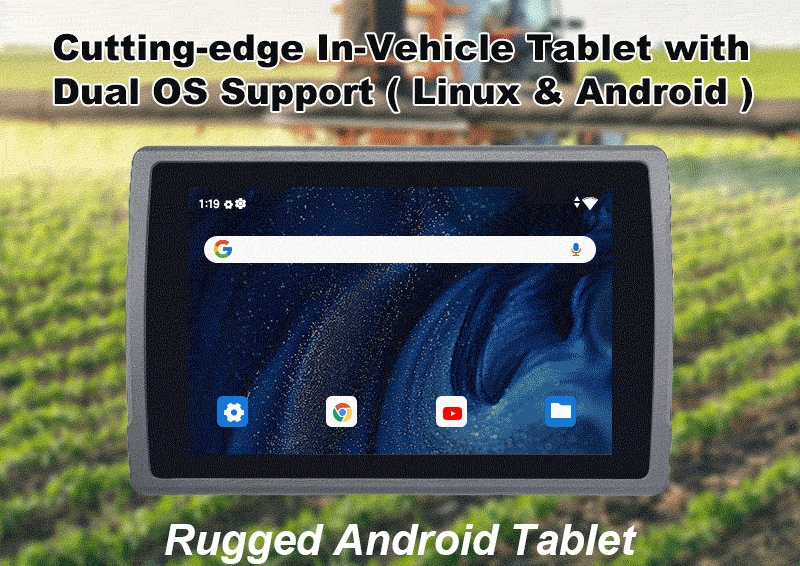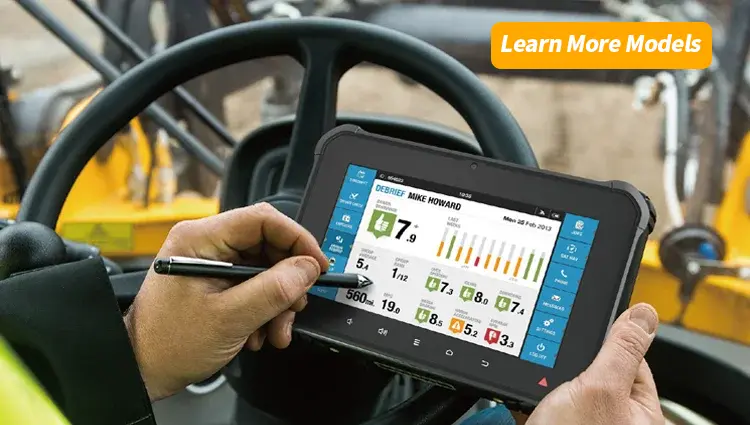Rugged Tablet Showdown: Android’s Q777 vs Linux’s SYVR10R – Powerhouse Performance
Introduction: The New Frontier of Rugged Mobility
In the ever-evolving world of technology, the demand for robust and reliable devices that can withstand the toughest of conditions has never been higher. Two leading contenders in this arena are the Q777 Ruggedized Tablet from Waysion, running on Android, and the SYVR10R Rugged Tablet, offering the flexibility of both Linux and Android operating systems. This comprehensive comparison will delve into the heart of these devices, examining their features, performance, and suitability for various industrial applications.
The Battle of Operating Systems: Android vs Linux
Android: Versatility and User-Friendliness
Q777 Ruggedized Tablet runs on Android 11, an operating system known for its versatility and user-friendliness. Android offers a wide range of applications and is favored for its intuitive interface and extensive support from the developer community. This makes the Q777 an excellent choice for users who require a familiar platform with a plethora of available apps to enhance their workflow.

Linux: Customizability and Stability
On the other hand, the SYVR10R Rugged Tablet boasts the ability to run both Linux and Android 12, providing users with the option to choose the OS that best suits their needs. Linux is renowned for its customizability and stability, making it ideal for applications that require a high degree of control over the system and the ability to run for extended periods without interruption.

Hardware Specifications: A Deep Dive
Processor and Performance
Both tablets are powered by the Rockchip RK3568, a 2.0GHz processor that ensures smooth operation even in the most demanding tasks. The Q777’s Quad-Core A55 ARM processor and the SYVR10R’s Quad-core Cortex-A55 processor deliver high-performance, low power consumption, and prolonged battery backup, making them perfect for mobile workforces in transportation and logistics.
Graphics Processing Unit (GPU)
The integrated Mali-G52-2EE GPU in both tablets operates up to 800MHz, providing robust graphics capabilities for a seamless user experience. Whether it’s for displaying high-resolution maps or running graphics-intensive applications, these tablets are equipped to handle it with ease.
Memory and Storage
The Q777 comes with 4GB LPDDR4 RAM and 32GB eMMC ROM, while the SYVR10R offers 4GB RAM and 64GB ROM, with options to upgrade to 8GB and 128/256GB respectively. This allows for extended storage and smooth multitasking capabilities, crucial for industrial applications.
Display and Readability
The Q777 features a 7-inch IPS LED backlight display with a resolution of 1280×800, while the SYVR10R boasts a 10.1-inch display with the same resolution but a higher brightness of 700cd/m2, making it perfect for outdoor use under direct sunlight.
Ruggedness and Durability
Both tablets are designed to withstand harsh environments. The Q777 rugged tablet has an IP65 rating, protecting it from dust and water jets, while the SYVR10R ups the ante with an IP67 rating, offering even greater protection against the elements.

Connectivity and Expansion: Bridging the Gap
Wireless Connectivity
Both tablets come with built-in WiFi, Bluetooth, and optional 4G/3G cellular connectivity, ensuring that users are always connected, regardless of their location. The SYVR10R also includes GPS+GLONASS+BEIDOU, providing accurate positioning for various applications.
I/O Interfaces
The Q777 offers a range of built-in and extended I/O interfaces, including ACC Input, ReverseGear Trigger, RS232, RS422/RS485, and AHD Camera In, making it a versatile choice for various vehicle-mounted applications. The SYVR10R, with its RJ45, RS232/RS485, CAN bus, and AHD Inputs, caters to a wide array of industrial needs.
Applications and Industries: Where These Tablets Shine
Transportation and Logistics
Both tablets are perfect companions for mobile workforces in transportation and logistics, offering the durability and connectivity needed to handle the rigors of the field. The Q777‘s compact design and the SYVR10R‘s high brightness display make them ideal for use in vehicles and outdoor environments.
Industrial Automation
In industrial automation, the customizability of the Linux OS on the SYVR10R and the wide range of I/O ports on both tablets allow for seamless integration with various machinery and systems, enhancing efficiency and control.
Precision Agriculture
The SYVR10R’s RTK mushroom antenna is particularly suited for precision farming, providing the accuracy needed for GPS-guided agricultural operations.

Conclusion: Choosing the Right Rugged Tablet
In conclusion, the choice between the Q777 and the SYVR10R depends on the specific needs of the user. For those who value a familiar Android interface and a compact design, the Q777 is an excellent choice. However, for users who require the flexibility of both Linux and Android, superior brightness for outdoor use, and a larger display, the SYVR10R is the clear winner.
Both tablets represent the cutting edge of rugged mobile technology, offering power, durability, and versatility that are unmatched in their class. As the world becomes increasingly reliant on mobile data terminals, the Q777 rugged android tablet and SYVR10R rugged linux tablet stand out as formidable contenders in the rugged tablet market.








